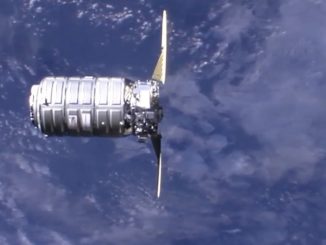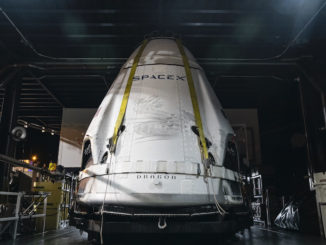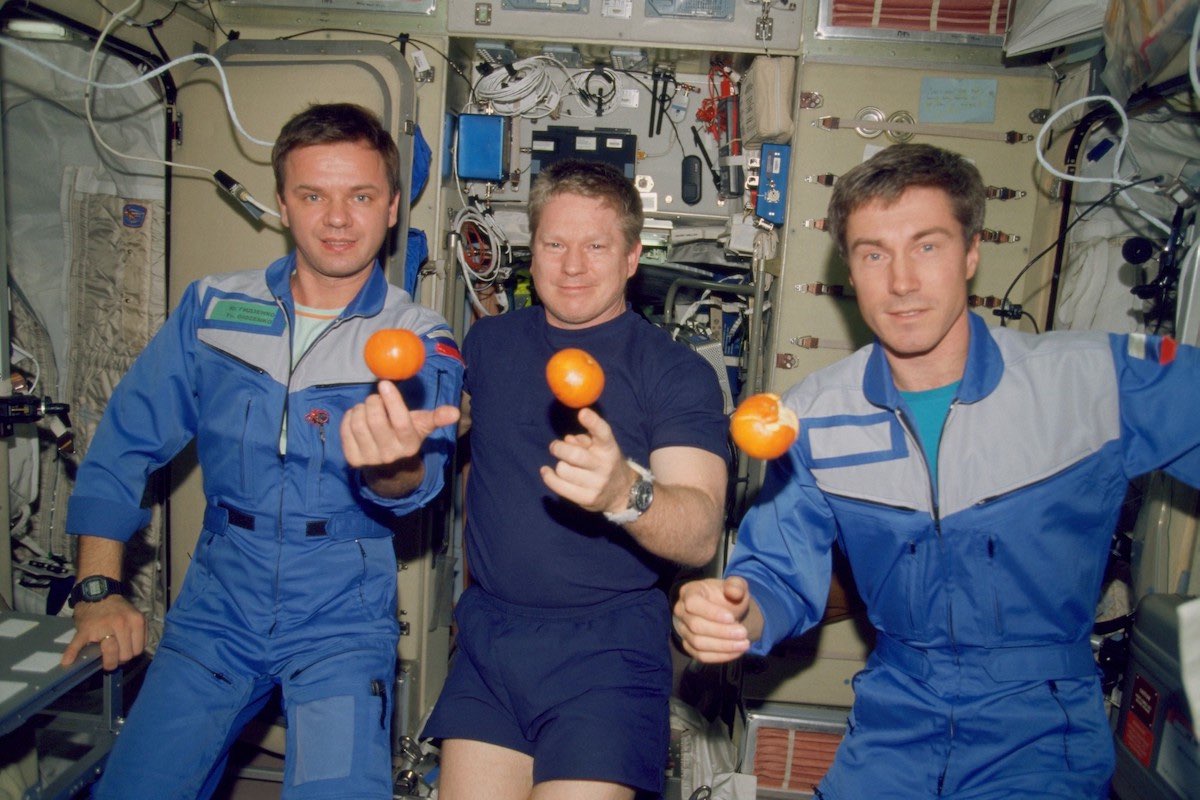
Bill Shepherd, a former Navy SEAL-turned astronaut who arrived at the International Space Station 20 years ago Monday to begin the continuous occupancy of the orbiting research outpost, says the experience gained by NASA and its global partners over the last two decades provides a blueprint for missions to the moon, Mars, and beyond.
Shepherd and his two Russian crewmates — Yuri Gidzenko and Sergei Krikalev — docked with the space station Nov. 2, 2000, aboard their Soyuz TM-31 spaceship, two days after launching from the Baikonur Cosmodrome in Kazakhstan.
Their first task? Get the hatch open and turn on the lights.
“When we just got there, we were not able to open the hatch right away,” Gidzenko recalled in a virtual panel discussion broadcast on NASA TV on Oct. 29. “We had to struggle … with our legs, with our arms for maybe five minutes. And we were thinking how come? We just arrived at the station but we were not able to get in.”
After some extra effort, the trio opened the hatches and floated into the space station’s darkened Zvezda service module.
“We finally opened the hatch and we got in, and we turned on the lights,” Gidzenko said. “We got some hot water. We activated the toilet, and I remember Shep (Shepherd) said, ‘Now we can live. We have light, we have hot water, and we have a toilet.'”
“It was very memorable switching on lights for the first time,” recalled Krikalev, a veteran cosmonaut who flew on Russia’s Mir space station, NASA’s space shuttles, and the International Space Station.
Shepherd, Gidzenko, and Krikalev arrived at the station nearly two years after the first elements of the research lab launched. The U.S.-owned, Russian-built Zarya control module launched Nov. 20, 1998, and NASA’s Unity connecting node joined Zarya the next month after riding into orbit on the shuttle Endeavour.
After lengthy delays, the station’s Zvezda service module launched July 12, 2000, atop a Russian Proton rocket. Two weeks later, it automatically docked with the Zarya module, completing the core of the International Space Station.
Two more space shuttle visits in September and October 2000 delivered supplies, communications equipment, control moment gyroscopes, and other gear necessary for the space station to support a three-person crew.
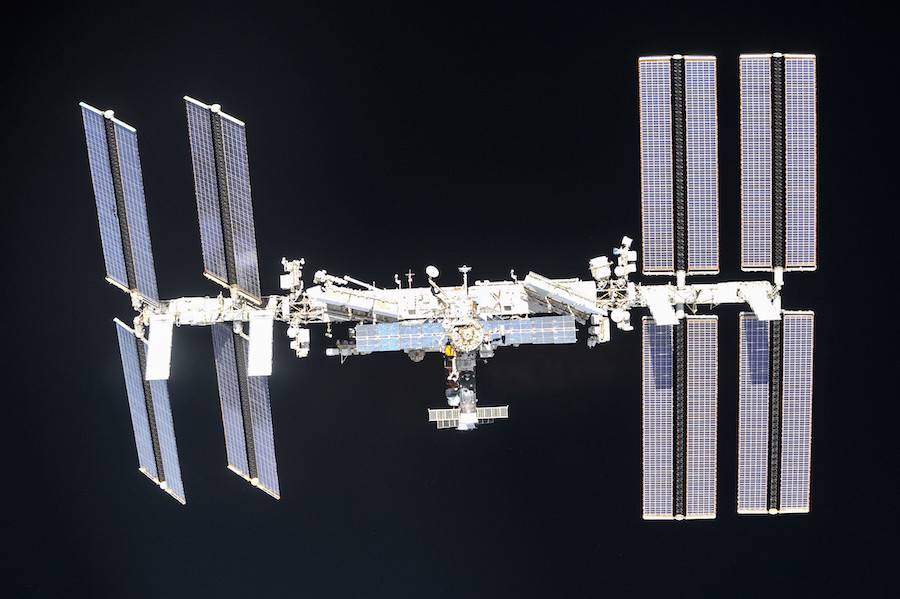
Krikalev said the Expedition 1 mission set the stage for 20 years of successful operations on the space station, which is now occupied by the Expedition 64 crew.
“The goal of our mission was to make the station alive because when we came, a lot of the systems were shut down, some of them were not even installed, and some of them installation and activation of the systems were life critical,” Krikalev said. “If we weren’t able to do this on time, we would have had to stop the mission early and return back home.”
Krikalev, now director of piloted missions at the Russian space agency Roscosmos, said that while the International Space Station is a laboratory designed to accommodate scientific investigations, the program itself is one big experiment.
“What we did on Expedition 1 was a big technical experiment,” he said. “Some of the hardware never met each other on the ground, and we had to install it in space for the first time, and not every time was smooth. I think it was a very interesting technical and organizational experiment, and the result of this experiment we’re using up to now.”
In many ways, Shepherd and his crewmates set the tone for the way ground teams oversee astronauts’ schedules and priorities on the space station. Early on, he complained of a grueling work schedule and different tasks assigned by mission control teams in Houston and Moscow, sometimes at odds with one another.
“Occasionally, we would get conflicting marching orders,” Shepherd said. “I got really frustrated one day, and I got on the radio, and both control centers can hear you … And (I) said, ‘Look, we’re the International Space Station. You guys have to coordinate one plan and give it to us, and that’s the plan we’ll do. We’re not doing one plan for Moscow and one plan for Houston.’
“They just needed that one little reminder, and I was happy to give it to them, and that was my happiest day in space,” Shepherd said.
In their first couple of weeks after their Nov. 2 docking, ground teams tasked the three-man crew with assembling and activating the space station’s Elektron oxygen generator, Vozdukh carbon dioxide removal system, and the air conditioner to get temperature and humidity under control. The crew also repaired broken batteries, installed a laptop computer network, and set up equipment for the TORU manual docking system, which is used as a backup for dockings of Russian Progress supply ships if their automated system fails.
It turned out the Expedition 1 crew needed the TORU system sooner than they thought. The radar-guided Kurs docking system failed on the first Progress cargo freighter launched after the crew arrived at the station, and Gidzenko had to take remote control from a position inside the Zvezda module.
A video display from a television camera on the Progress supply ship was supposed to give Gidzenko visual cues as he used hand controllers to steer the spacecraft to docking.
But it wasn’t that simple.
“The next issue was the lens on the camera that was used for aligning the vehicle was fogged,” Krikalev recalled.
Krikalev floated to a window and passed along his view of the approaching spacecraft to Gidzenko. Finally, once the space station flew into sunlight, the fog on the Progress ship’s camera dissipated enough to allow Gidzenko to guide it to a safe docking.
During the Expedition 1 crew’s mission, two more space shuttle flights delivered the first set of huge power-generating solar panels and the Destiny research lab module to the International Space Station.
A third shuttle visit with Discovery carried the next three-person crew — Expedition 2 — to the space station. Shepherd, Gidzenko, and Krikalev flew back to Earth on Discovery and landed at the Kennedy Space Center in Florida on March 21, 2001, closing out more than 140 days in orbit.
“I think space station, in particular Expedition 1, set the tone for how crews need to operate in space,” Shepherd said. “We can fly really big complex vehicles. With lots of international partners, and with the right ground support and training, we can figure out how to make it all work.
“I think it’s the blueprint for larger expeditions and going certainly to the moon, and probably beyond that to Mars and elsewhere,” Shepherd said.
In total, 240 individuals from 19 countries have visited the International Space Station since construction began in 1998. The 450-ton research complex flies more than 250 miles above Earth, racing around the planet every 90 minutes or so.
Twenty years after Expedition 1, the Expedition 64 crew is now living and working aboard the space station.
Kate Rubins, a flight engineer on the Expedition 64 crew, called the space station a “world class laboratory” in a news conference Friday.
“And it’s an absolutely packed one,” she continued. “We have over 200 experiments per expedition. It’s like taking an entire university campus, a world class university, and shrinking it down to the size of the space station.
“The space station, in even this kind of small space, has all of this biology equipment, but then it’s also a materials science laboratory. It’s a physics laboratory,” Rubins said.
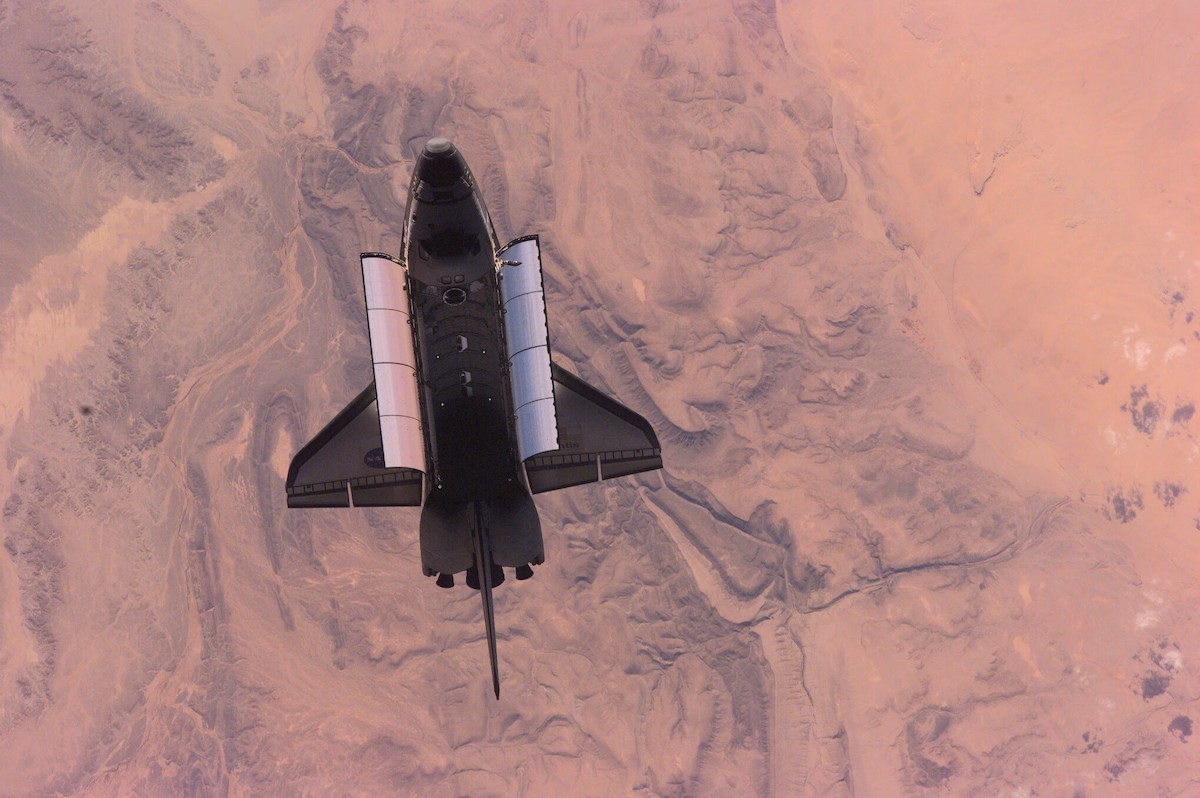
Space station crews have performed numerous experiments researching new pharmaceutical remedies for neurological, cardiovascular, and muscular diseases, studying how microgravity affects liquids and flame, and investigating how months of living in orbit changes their bodies.
Research aboard the space station has found that living in microgravity can degrade astronauts’ vision.
NASA has developed exercise equipment and workout regimens to combat the loss of bone and muscle mass for astronauts living on the space station. Those therapies, along with drugs that have been tested on the space station, might help osteoporosis patients.
The Cold Atom Lab on the International Space Station became the first facility to produce a fifth state of matter, called a Bose-Einstein condensate, in Earth orbit, according to NASA. The lab is capable of reaching ultra-cold temperatures, allowing scientists to slow the movement of atoms until they are almost motionless, revealing previously-unseen details about the basic nature of matter.
Space station crews have also tested advanced life support systems, including a closed-loop recycler that turns urine into drinking water, that future astronauts will need on expeditions to the moon and Mars.
“If you follow space station news, you’ll hear about things breaking all the time,” Rubins said. “The toilet breaks all the time, we fix it, it’s not a big issue. One of the reasons that it seems to ‘break’ all the time is we’re actually really pushing the forefront of technology here. Our water recycling system is 90% closed-loop.
“This is really exciting technology,” Rubins said. “We’re sort of testing what breaks down, what happens to this technology as we push it forward for human exploration. So things are usually not broken beyond repair. They’re always something that we can work on, and we can repair, and we have plenty of spare parts up here.”
The International Space Station has also hosted instruments to study Earth’s changing climate and observe distant black holes.
The station has also provided a platform to deploy hundreds of small CubeSats, helping foster research, commercial space markets, and educational opportunities for students to get hands-on experience with spaceflight.
And then there’s SpaceX, which got its first big government contract from NASA in 2008 to resupply the International Space Station with automated Dragon cargo capsules. That contract helped lead to the development of SpaceX’s Falcon 9 rocket, now a leader in the commercial launch market, and the Crew Dragon spaceship to ferry astronauts to the space station.
NASA also signed contracts with Northrop Grumman and Boeing to deliver cargo and crews to the space station.
SpaceX is poised to begin regular crew flights to the station later this month. Since the shuttle’s retirement in 2011, Russian Soyuz capsules have been the only vehicles certified for operational crew rotation missions to the station.
Sergey Ryzhikov, the current commander on the space station, said Friday that the orbiting outpost was in “very good condition.”
“It’s looking very good. We’ve got a ton of scientific equipment, but in terms of the actual structure and hardware, the station is certified through 2024,” Rubins said. “NASA has certified most of the hardware through 2028, and so we do expect that this is going to be with us for a long time, and it’s going to be producing incredible science and incredible results for years to come.”
The International Space Station is the largest spacecraft ever built, spanning 357 feet (108 meters) wide on its longest axis. But all three current residents on the space station agreed they could use some more volume to store supplies and scientific experiments.
“We always have space here for ideas,” said flight engineer Sergey Kud-Sverchkov. We always have something to upgrade … One of the issues is that the volume of the station is really limited, and we always need more space — more modules — and probably that would be a great update for the station because we have high-level equipment, but sometimes we don’t have space for that.”
“We welcome any and all modules, particularly if they have some stowage space,” Rubins said.
The International Space Station is jointly run by U.S., Russian, Japanese, European, and Canadian space agencies.
All but the Russian space agency plan to participate in the NASA-led Artemis program, which aims to return astronauts to the moon’s surface by 2024, construct a mini-space station in lunar orbit, and eventually build out a lasting human presence at the moon before sending the first humans to Mars.
NASA officials hope a private company can build a follow-on to the International Space Station low Earth orbit, perhaps as soon as the late 2020s. If that happens, NASA and private industry can buy access and capacity for astronauts and experiments on the commercial space station on a rotating basis.
The U.S. space agency hopes operating costs for a commercial space station will come in lower than the government-run International Space Station. In 2019, NASA spent $3.6 billion to run the space station program and pay for crew and cargo transportation to and from the orbiting lab.
A reduction in NASA’s cost burden for a low Earth orbit station could allow the agency to repurpose funds toward deep space exploration.
Check back later this week for a Spaceflight Now report on the development of a private space station in low Earth orbit.
Email the author.
Follow Stephen Clark on Twitter: @StephenClark1.


